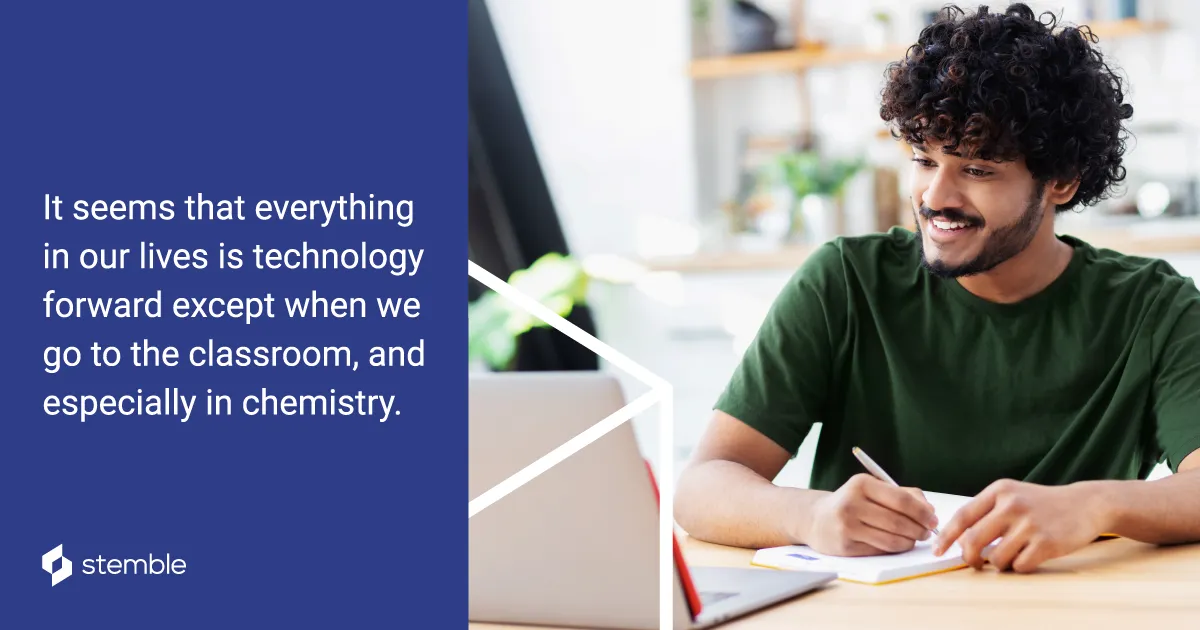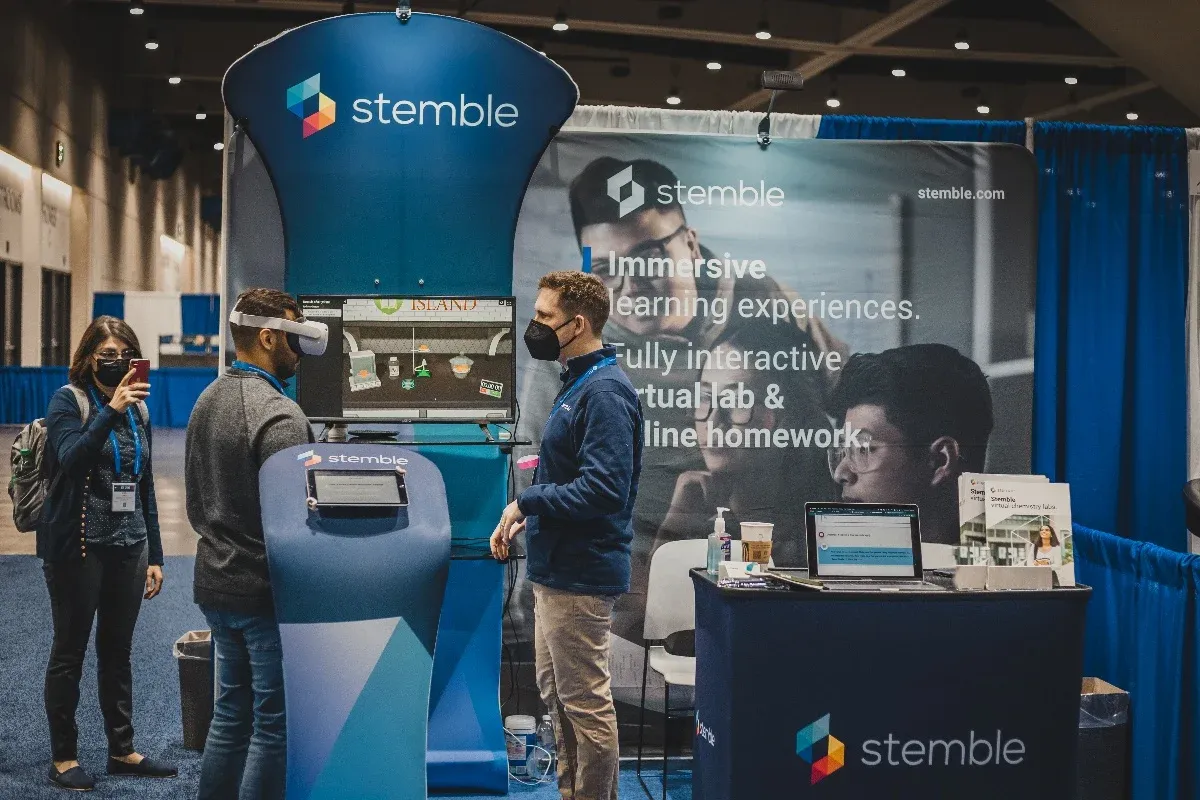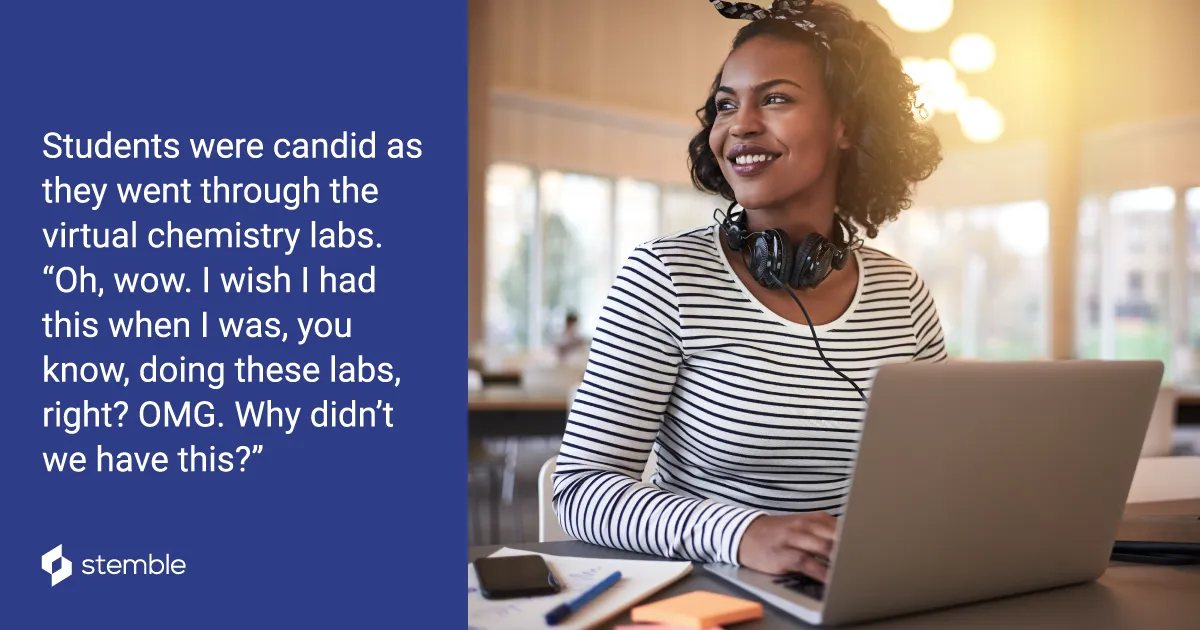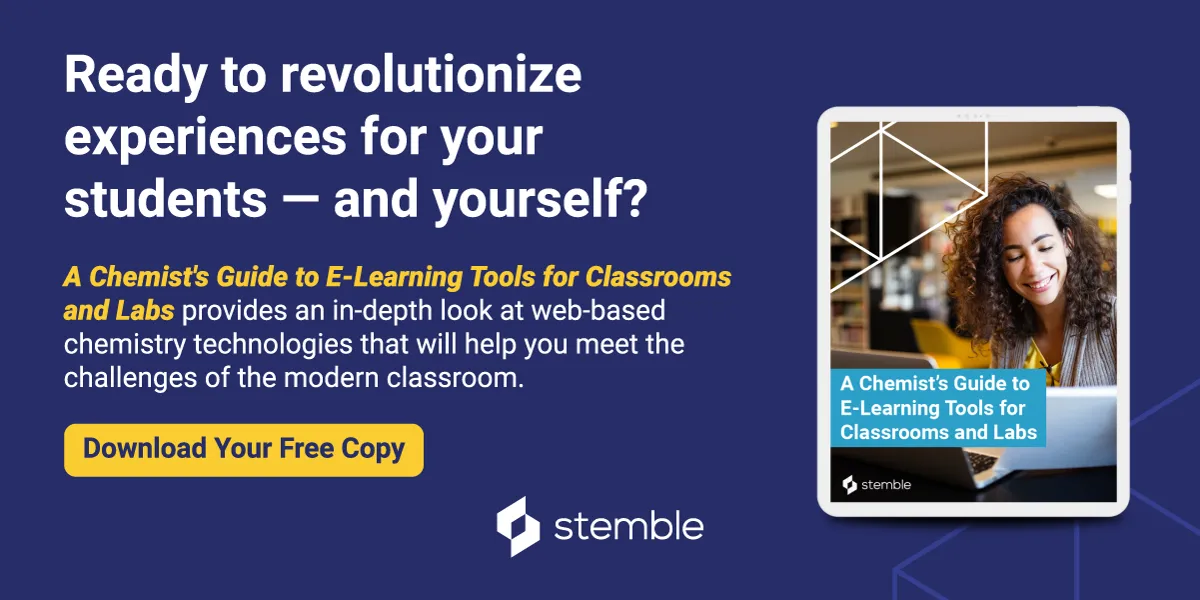How Interactive Lab Simulations Help Educators Meet the Expectations of Modern Students
Tech-driven experiences and edtech tools like interactive lab simulations can help educators meet modern undergraduate chemistry students' expectations.
Prof. Jason Pearson, PhD

How can education — in person or remote — compete when students can play online games with hundreds of people and fly jets in VR?
While interactive lab simulations may not have the same thrill factor as a VR jet sim, they come closest to meeting students where they are. While we’re all using apps to do everything from turning on the lights to sending for takeout, education’s relationship with technology is a lagging one. So what does that mean for students?

What Do Modern Students Expect from Their University Education?
It sounds like the answer to a riddle: Modern students don’t expect much — and yet, they also expect *everything. *
It’s not a simple answer, but nothing in the modern era is. But here’s what we’ve observed: **it’s not the student’s expectation to have a technology-forward experience when they’re at university. **
Universities are often lauded for their old traditions, their hallowed (and often historic) halls, and the nostalgia carried by scores of alumni. However, this veneration of the past can cause universities, so steeped in the old ways of doing things, to ignore what’s needed in the current era.
If we were to ask you to picture “studious university student,” many of you would envision a student in an enormous library surrounded by shelves of heavy books. And there, as you know, they’d have to go grab the dusty tomes at the library to get their hard-won information and hope nobody else took them out already. It’s a common vision.
Google backs us up on this one, almost immediately.
The reality is that most undergraduate students don’t even go to the library anymore. The majority are just turning to Google to go get an answer.
So their expectations are actually going backwards when they go to the university. Digging through old books is what students expect. And unfortunately, those expectations are met all too often.
Our day-to-day lives are very technologically connected, and we use cool apps to do just about everything. It’s even somewhat ironic; many universities allow students to apply online, choose classes online, and of course — pay online.
Indeed it seems that everything in our lives is technology forward except when we go to the classroom, and especially in chemistry. This is a true shame, as chemistry is such a vibrant modern science, and we lose students because we aren’t engaging them successfully.
And unfortunately, students don’t expect otherwise.
The Dichotomy of Students’ Digital Lives
In our day-to-day lives, we use cool apps to do just about everything. We scan our bus pass to get across town. We shop online and our groceries are bagged and ready to go when we get to the store. When we need to get somewhere where there’s no transportation, it’s cool, we’ll just call an Uber or Lyft. Want to have ice cream and sushi in our pajamas? Doordash or Grubhub to the rescue. When we plan a vacation with friends we check out Airbnb. If we want to hang out with friends but stay home we set up a video call.
Meanwhile, VR headsets were the highest-selling holiday gift in 2021, beating out every gaming console on the market. Yet, sales of the iPhone 13 eclipsed it — and rumors are that Apple has completed tests on an augmented reality (AR) and virtual reality (VR) headset expected to enter the market late in 2022.
Yet when students arrive at school, they’re given 8.5x11 sheets of paper with information. If they’re in a forward-looking or “digital” class, maybe their book will be a pdf or a beefed up website. (A lot of educational tools — and educational technology — are just a bit dated.) Burdened with teaching basic chemistry concepts that aren’t being communicated well by existing materials, instructors struggle to connect with students. Without connection to the materials or the instructor, students aren’t motivated to engage. No wonder it’s a cycle of frustration for everyone involved — but it doesn’t have to be.
Creating Effective Student Engagement with Chemistry
Keeping up with student expectations and needs is a worthy — and worthwhile — challenge because successful student engagement can be stunning.
Once a student is engaged, they’ll invest time and energy into the subject. They “get” what chemistry is about and then, as one of my colleagues says, “We’ve got them for life!”
It’s true, people who have incredible experiences in chemistry devote their lives to science. And chemistry is everything in the modern world from batteries and drugs to materials. It’s chemistry that brings all of that to the forefront. It’s a fantastically engaging and interesting discipline, but because our teaching methods are so technologically behind we’re just not convincing students of that.
We’re giving them a thousand-page textbook and telling them to read it and understand it just to start appreciating chemistry! And that just doesn’t work for so many people, especially when as soon as a student gets home Alexa has already turned on the lights and is telling them what the weather is. And then they’re setting in to play virtual reality video games with friends.
The world students live in is so very different from what the classroom is trying to do for them.
Chemistry educators need a technological solution. They need a partner that’s constantly innovating, developing new simulations, and testing those with students — and one that can help bridge the gap between Chemistry being thought of as that boring, tedious subject to be avoided in school. Meeting students where they are — on phones, tablets, whatever — is critical to meet the demands of this generation of students.
We can first easily acknowledge that there’s no educator who’s going to be able to compete with flight simulators. And we can also acknowledge that an educator can’t just pick a flashy textbook and engage students with it either, even if it’s an online textbook.
Student Reactions to Interactive Lab Simulations
Students are fairly transparent about what works for them. Students have been clear in surveys that they want to use more tech in school. And even without data showing improved student outcomes after using virtual lab tools, we would be able to tell by their actions what they enjoy. Students are energized by new technology and by tools that help them be more successful in school.
We were reminded of this during a recent conference for the American Chemical Society. On the first day of the conference, our booth was bombarded with students. They’d see the headset we brought for professors to experience our virtual chem lab simulations. We hadn’t been expecting students to come over exclaiming, “Oh wow, this looks cool. Can I try this on?” Soon enough there was a crowd lining up, trying it on, and sharing it with their friends. Students were candid as they went through the virtual chemistry labs using the app. “Oh, wow. I wish I had this when I was, you know, doing these labs, right? OMG. Why didn’t we have this?”

Dr. Jason Pearson guides an attendee through a virtual experience at the 2022 American Chemical Society Conference.
Now, we can all agree that graduate students attending the American Chemical Society Conference are pretty invested in Chemistry already. They don’t need bells and whistles to be engaged — they made it through their undergraduate years and are all in. And yet, even they were so excited about how it feels to have material presented and designed specifically to meet them where they are.
Now, this wasn’t how we envisioned our conference experience, that’s for sure! We’d expected we’d talk to the professors and they’d talk to their students.
On day two, their professors started showing up. They’d say, “My students told me I had to come and talk to you.” And, “My students told me I had to come and see what you guys were doing.”
We didn’t anticipate that the students would be so enthusiastic about the interactive lab simulations that they’d encouraged their professors to engage with the technology. They knew what would have helped them as undergraduates and wanted their educators to know that there were newer, better ways to learn chemistry than what they themselves had experienced.
Many of them were at the stage of their education where they’d be teaching assistants, and they immediately saw how virtual chem labs could help undergraduates have a better understanding of chemistry. It’s easy to see how those students will have better experiences in in-person labs as well.
The professors listened. Often, teaching faculty have been doing their work for a long time. They’ve perfected their teaching path over time, and it’s well-worn and comfortable. However, it can quickly go from a well-worn path to a muddy rut. Fortunately, students are still energetic enough to climb in and out of ruts — and sometimes help their professors see up and over the edge again.

So What Does It Mean for Student Expectations?
Students want to have highly engaging experiences at University. When those are offered, it’s no surprise that students will respond well and be more likely to be successful.
Like it or not, educators must acknowledge that these digital natives spend hours and hours in vibrant, challenging virtual worlds… and then they go to school where they’re handed a paper book. (Which, incidentally, probably cost them at least five times more than a Fortnite battle pass.) As educators, we need to bring that forward to meet the expectations of this generation of students, meeting them where they are when they walk through our doors.
The fact is that technology is the future and it is the future in education, and there are countless opportunities and possibilities. The future is here and students rightly believe that it should be every part of their lives, including when they go to school. In fact, it’s probably most important to be technology forward at school. And while Fortnite is great, school is really where students’ opportunities are.

Prof. Jason Pearson, PhD
Co-Founder
Jason Pearson is a Professor of Chemistry at the University of Prince Edward Island, where he leads an interdisciplinary research group in computational methods for chemistry. He is also co-founder of Stemble Learning, a data-driven teaching and learning platform for chemistry classes and laboratories. He is the winner of numerous SoTL awards including the Reg Friesen Award from the Chem. Ed. Division of the CSC, The Hessian Award, The Janet Pottie Murray Award for Educational Leadership, and the Brightspace Award for Innovation in Teaching and Learning from the STLHE.
